Table of Contents
Conquer the slopes with confidence and finesse with Kizworld's guide to The best snowboarding exercises and workouts. Enhance your skills, push your limits, and experience the thrill of gliding through the snow like a pro. Discover targeted core, leg, and shoulder routines to improve your balance, stability, and power. Learn how to optimize your cardiovascular endurance and coordination for effortless maneuvering. Unlock the secrets to injury prevention and optimize your nutrition for peak performance. Unleash your potential and embrace the mountains with kizworld's comprehensive snowboarding fitness program.
The Best Snowboarding Exercises and Workouts for a Thrilling Ride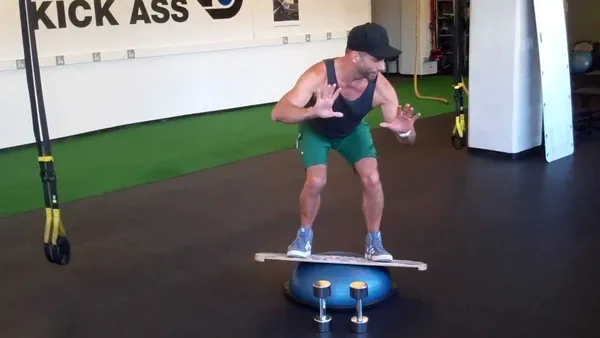
I. Snowboarding Exercises for Core Strength
Snowboarding Exercises for Core Strength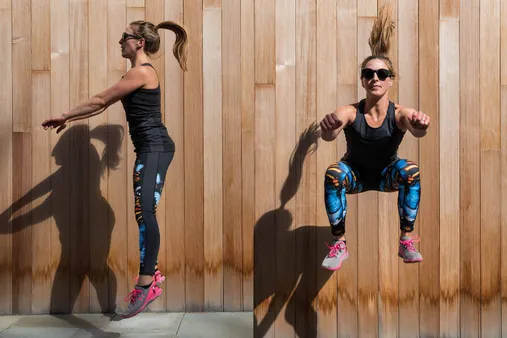
A strong core is essential for snowboarding, as it helps stabilize your body and absorb the impact of landings. The following exercises can help you develop a strong core that will help you perform better and prevent injuries on the slopes:
- Plank: Hold a push-up position for as long as you can, keeping your body in a straight line from head to heels.
- Side plank: Lie on your side and prop yourself up on your elbow, keeping your body in a straight line. Hold this position for as long as you can on each side.
- V-up: Lie on your back and extend your legs and arms overhead. Lower them together towards each other, then return to the starting position.
- Cross-body crunch: Sit on a fitness mat with your knees bent and feet on the floor. Clasp your hands behind your head and twist your upper body to the left, then to the right, while keeping your lower body still.
- Bicycle crunch: Lie on your back and place your hands behind your head. Bring your right elbow to your left knee while simultaneously extending your right leg. Then, bring your left elbow to your right knee while simultaneously extending your left leg. Continue alternating sides.
- Russian twist: Sit on a fitness mat with your knees bent and feet on the floor. Hold a medicine ball or dumbbell in both hands in front of your chest. Twist your upper body to the left, then to the right, while keeping your lower body still.
In addition to these core exercises, you can also improve your core strength by incorporating core-activating exercises into your regular snowboarding routine. These exercises include:
- Squats: Squatting while keeping your chest up and back straight works your quads, hamstrings, and glutes, as well as your core.
- Lunges: Lunges target your quads, hamstrings, and glutes, and also engage your core to stabilize your body.
- Push-ups: Push-ups work your chest, shoulders, and triceps, as well as your core.
- Rows: Rows target your back muscles, as well as your core.
- Overhead press: Overhead press targets your shoulders, triceps, and core.
By incorporating these core exercises and core-activating exercises into your training routine, you can develop a strong core that will help you perform better and prevent injuries on the slopes.
Of course, snowboarding is also a great way to get a full-body workout. In addition to strengthening your core, snowboarding can also help you improve your balance, coordination, and agility. So get out there and enjoy the snow!
II. Here are some related posts that you may find interesting:
- The Best Snowboarding Exercises and Workouts
- How to Improve Your Balance and Coordination for Snowboarding
- The Most Common Snowboarding Injuries and How to Prevent Them
- The Best Snowboarding Gear for Beginners
- The Top Snowboarding Spots in the World
III. Snowboarding Exercises for Leg Strength
Snowboarding Exercises for Leg Strength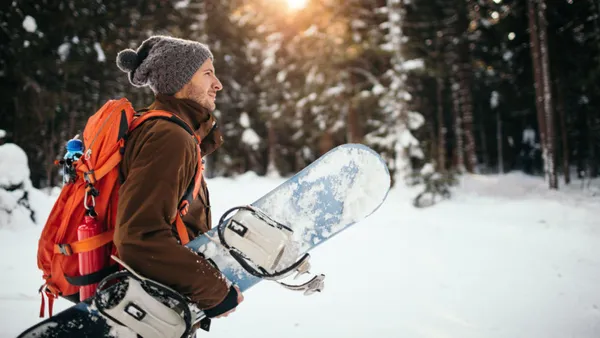
Lunges
Lunges are a great way to build strength in your quads, hamstrings, and glutes. To do a lunge, stand with your feet shoulder-width apart. Step forward with your right foot and bend your knee so that your thigh is parallel to the ground. Keep your left leg straight. Press your left heel into the ground and push yourself back to the starting position. Repeat on the other side.
Squats
Squats are another excellent exercise for building leg strength. To do a squat, stand with your feet shoulder-width apart. Bend your knees and hips and lower your body until your thighs are parallel to the ground. Keep your back straight and your knees aligned with your toes. Press your heels into the ground and push yourself back to the starting position.
Step-Ups
Step-ups are a great way to build strength in your quads, hamstrings, and glutes. To do a step-up, find a step or platform that is about knee-high. Step onto the platform with your right foot and then bring your left foot up to meet it. Step down and repeat on the other side.
Leg Press
The leg press is a machine exercise that targets the quads, hamstrings, and glutes. To do a leg press, sit in the machine and place your feet on the platform. Bend your knees and lower the platform until your thighs are parallel to the ground. Press your heels into the platform and push yourself back to the starting position.
Exercise | Targeted Muscles |
|---|---|
Lunges | Quads, hamstrings, glutes |
Squats | Quads, hamstrings, glutes |
Step-Ups | Quads, hamstrings, glutes |
Leg Press | Quads, hamstrings, glutes |
Hamstring Curl
The hamstring curl is a machine exercise that targets the hamstrings. To do a hamstring curl, lie on your stomach on the machine and place your heels on the platform. Bend your knees and pull the platform towards your buttocks. Slowly lower the platform back to the starting position.
IV. Snowboarding Exercises for Balance and Coordination
Snowboarding Exercises for Balance and Coordination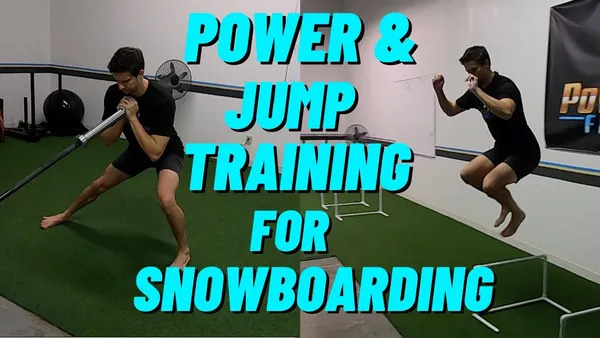
Balance and coordination are essential for snowboarding. These exercises will help you improve your skills and stay safe on the slopes.
- Single-leg stance: Stand on one leg for 30 seconds, then switch legs. Repeat for 3 sets.
- Double-leg stance: Stand with your feet shoulder-width apart and your knees slightly bent. Close your eyes and hold the position for 30 seconds. Repeat for 3 sets.
- Heel-toe walk: Walk forward and backward, placing your heel on the toe of your other foot. Continue for 30 seconds, then switch directions. Repeat for 3 sets.
- Side-to-side walk: Walk sideways, taking small steps. Continue for 30 seconds, then switch directions. Repeat for 3 sets.
- Forward-and-back walk: Walk forward and backward, taking large steps. Continue for 30 seconds, then switch directions. Repeat for 3 sets.
These exercises can be done anywhere, so you can easily fit them into your routine. Start with a few sets each day and gradually increase the number of sets as you get stronger.
Day | Exercise | Sets | Reps |
Monday | Single-leg stance | 3 | 30 seconds per leg |
Tuesday | Double-leg stance | 3 | 30 seconds |
Wednesday | Heel-toe walk | 3 | 30 seconds |
Thursday | Side-to-side walk | 3 | 30 seconds |
Friday | Forward-and-back walk | 3 | 30 seconds |
In addition to these exercises, you can also improve your balance and coordination by practicing on a balance board or wobble board. These devices can help you develop the skills you need to stay upright on your snowboard.
With regular practice, you can improve your balance and coordination and become a better snowboarder.
Here are some additional tips for improving your balance and coordination on a snowboard:
- Keep your weight centered: Your weight should be evenly distributed between your front and back foot.
- Bend your knees: Bending your knees will help you absorb shock and maintain your balance.
- Look ahead: Keep your eyes focused on where you want to go, not at your feet.
- Relax: If you're tense, you'll be more likely to lose your balance. Stay relaxed and let your body move naturally.
- Practice, practice, practice: The more you snowboard, the better your balance and coordination will become.
With a little practice, you'll be able to snowboard with confidence and control.
Related posts:
- How to Choose the Right Snowboard for Your Skill Level and Style
- The Benefits of Snowboarding for Fitness and Fun
- The Best Snowboarding Equipment and Accessories
V. Snowboarding Exercises for Endurance
Snowboarding Exercises for Endurance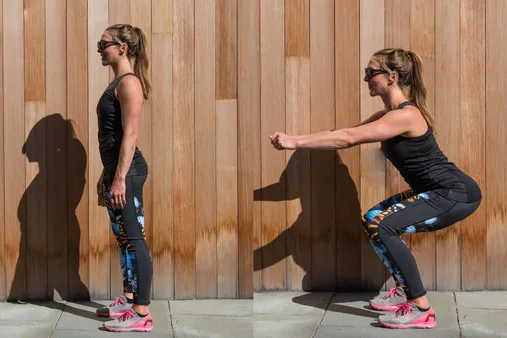
Snowboarding is a physically demanding sport that requires a high level of endurance. To improve your endurance, you need to focus on exercises that will help you build your cardiovascular system and muscular strength. Here are some exercises that you can do to improve your snowboarding endurance:
- Cardiovascular exercises: These exercises will help you improve your heart and lung function, which will allow you to snowboard for longer periods of time without getting tired. Some good cardiovascular exercises include running, cycling, swimming, and elliptical training.
- Muscular strength exercises: These exercises will help you build the muscles that you need to snowboard, including your legs, core, and back. Some good muscular strength exercises include squats, lunges, push-ups, and pull-ups.
In addition to these exercises, you can also improve your snowboarding endurance by:
- Eating a healthy diet: Eating a healthy diet will give you the energy you need to snowboard. Make sure to eat plenty of fruits, vegetables, and whole grains.
- Getting enough sleep: Getting enough sleep will help your body recover from your workouts and prepare for your next day of snowboarding.
- Staying hydrated: Staying hydrated will help your body function properly and prevent you from getting tired. Drink plenty of water before, during, and after your snowboarding sessions.
By following these tips, you can improve your snowboarding endurance and enjoy longer days on the mountain.
Here are some additional tips for improving your snowboarding endurance:
- Start slowly and gradually increase the intensity and duration of your workouts.
- Listen to your body and take breaks when you need them.
- Find a workout buddy to help you stay motivated.
- Make your workouts fun by choosing activities that you enjoy.
With a little effort, you can improve your snowboarding endurance and enjoy longer days on the mountain.
Here are some related posts that you may find helpful:
- The Best Snowboarding Exercises and Workouts
- How to Improve Your Cardiovascular Endurance for Snowboarding
- How to Build Muscular Strength for Snowboarding
VI. Conclusion
As you embark on your snowboarding journey, remember that consistency and dedication are key to unlocking your full potential. Embrace the challenge, stay committed to your training regimen, and watch your skills soar to new heights. With the right combination of exercises, nutrition, and practice, you'll transform into a confident and capable snowboarder, ready to conquer any mountain that comes your way. So, gear up, hit the slopes, and experience the exhilarating freedom that only snowboarding can provide. Shred on!